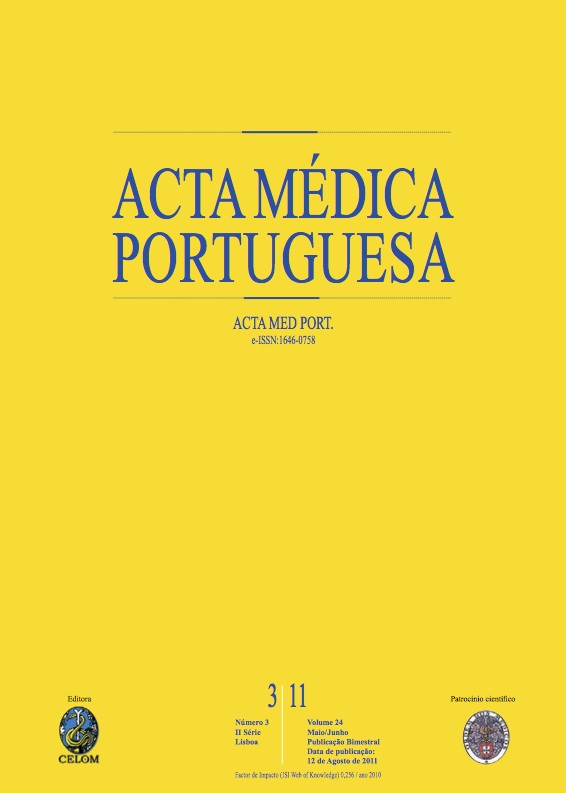Post-traumatic meningitis in children: eleven years' analysis.
DOI:
https://doi.org/10.20344/amp.467Abstract
Traumatic brain injury is a frequent reason for admission at pediatric emergency services. In severe cases, with basilar skull fracture, bacterial meningitis is a serious and potentially fatal complication to be considered.To describe clinical and laboratory features, bacteriology and outcome of children with post-traumatic meningitis, and evaluate the proportion of meningitis in the population who suffered head trauma.Retrospective review of medical records of children with this diagnosis admitted to a level 3 pediatric hospitals in the Central Region of Portugal, contextualized in the evaluation of the number of head injuries, fractures and cerebrospinal fluid leakages, during a 11-year period (January 1999 to December 2009).Four children were identified, corresponding to 0,7% of the children with skull fractures, 4,1% of children with basilar skull fractures and 13,8% of those with documented cerebrospinal fluid leakage. Three were boys, with a median age of 8 years (2-10 years). The median time between head trauma and meningitis was 1,1 years (3 days-3,4 years). In all cases a basilar skull fracture was identified and cerebrospinal fluid leakage documented. Two children required surgery. Streptococcus pneumonia was the pathogen identified in two cases with positive cerebrospinal fluid culture. One child died and other has post-traumatic peripheral facial palsy.Bacterial meningitis is a complication to be considered in head injury with basilar skull fracture, particularly when associated with cerebrospinal fluid leakage, even though the injury occurred several years earlier, and is usually a serious condition. One of our children died. Similar to what is described, S. pneumoniae was the most common bacteria, and this fact supports that children with head trauma and cerebrospinal fluid leakage should receive pneumococcal vaccine. The follow-up of these children requires constant vigilance and should include a multidisciplinary approach.Downloads
Downloads
How to Cite
Issue
Section
License
All the articles published in the AMP are open access and comply with the requirements of funding agencies or academic institutions. The AMP is governed by the terms of the Creative Commons ‘Attribution – Non-Commercial Use - (CC-BY-NC)’ license, regarding the use by third parties.
It is the author’s responsibility to obtain approval for the reproduction of figures, tables, etc. from other publications.
Upon acceptance of an article for publication, the authors will be asked to complete the ICMJE “Copyright Liability and Copyright Sharing Statement “(http://www.actamedicaportuguesa.com/info/AMP-NormasPublicacao.pdf) and the “Declaration of Potential Conflicts of Interest” (http:// www.icmje.org/conflicts-of-interest). An e-mail will be sent to the corresponding author to acknowledge receipt of the manuscript.
After publication, the authors are authorised to make their articles available in repositories of their institutions of origin, as long as they always mention where they were published and according to the Creative Commons license.









